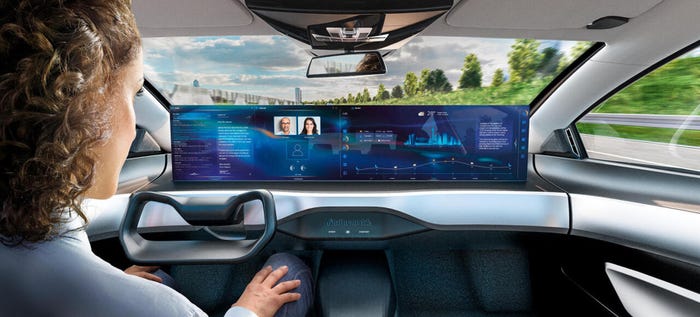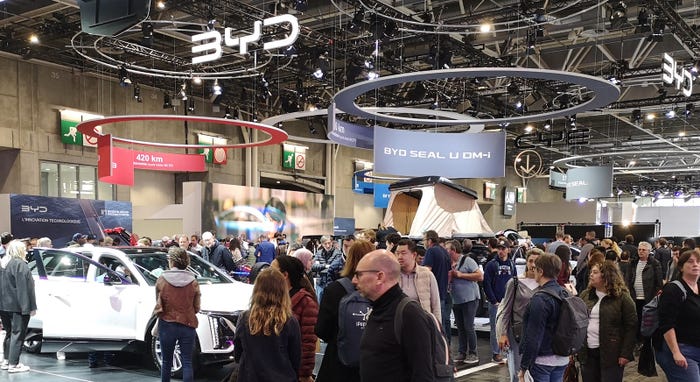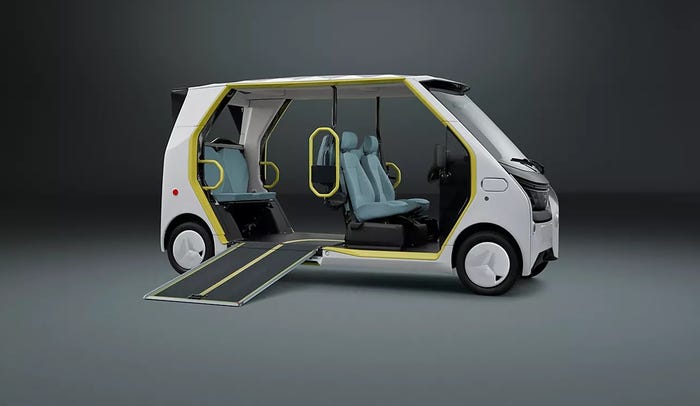
I know every reason why hydrogen vehicles don’t stand a chance in the marketplace. The fuel cells cost too much, the hydrogen is too expensive and there’s no infrastructure to distribute it. Besides, the thinking goes, battery-electric vehicles are so much better.
And yet, I’ve come around to believe that in the right applications, hydrogen fuel-cell vehicles make a lot of sense. Maybe not right now, but over the next decade or two they’re likely to push BEVs aside in certain applications, like long-haul, heavy-load trucking.
As we slowly evolve to a low-carbon future, there seem to be three pathways forward in the transportation sector: battery-electrics, hydrogen fuel cells or zero-carbon fuel for internal-combustion engines.
Battery-electrics are already here. The cost of the batteries keeps coming down, the range of the vehicles keeps increasing and charging times keep getting faster. And the electric grid is already in place to recharge them. But for many large truck and bus fleets, BEVs can’t get the job done. More on this in a minute.
Zero-carbon fuel is an enticing alternative. A drop-in fuel with no carbon in it would instantly make every IC engine viable for a net-zero-carbon world. But the efforts so far, notably Porsche’s net-zero fuel being developed at an experimental refinery in Chile, are expensive. That fuel currently costs $45 per gallon. Porsche hopes to get that down to $8 per gallon in another two years. We’ll see. The powertrain experts I’ve talked to don’t expect to see a drop in fuel in the volume that’s needed, at the cost that’s needed, or in the time that’s needed to save the ICE.
That’s why a number of companies (e.g., Toyota, Bosch) are working on using hydrogen as a fuel for IC engines. But they still face the problem of cost, infrastructure and distribution. Fuel-cell vehicles face the same problem, but fuel cells are far more efficient than IC engines. That’s a critical issue because hydrogen also is too expensive.
The best IC engines today are at about 40% thermal efficiency. Most are around 20% to 30%. Running on hydrogen actually boosts them to about 50%. But fuel cells are about 65% efficient, so they use less hydrogen than an IC engine that’s burning it.
The reason why hydrogen fuel cells make sense in long-haul, heavy-load trucking is that far fewer fueling stations are needed compared to passenger cars. The state of California, for example, estimates it would only need about 60 hydrogen stations to meet the needs of long-haul truckers. And there are billions of dollars in subsidies from the Inflation Reduction Act to pay for a big chunk of it.
Fleets are interested in fuel-cell trucks because the refueling time can be the same as refueling a diesel rig, about 10 minutes. A company called First Element Fuel, working with Bosch Rexroth, developed what they call a cryopump, that can pump liquid hydrogen into a Class 8 truck that quickly. A cryopump station costs half as much as a gaseous station, has a much smaller footprint and uses one-fifth the amount of electricity to power it. And it only takes 15 heavy-duty trucks refueling every day to make a hydrogen fueling station profitable, versus 700 cars. FEF says one cryopump could fill up two trucks simultaneously, with 10-minute refills. No one in the battery-electric world can get that kind of turnaround yet when it comes to charging.
Liquid hydrogen is the key to making this happen. It’s much more energy-dense than gaseous hydrogen. And it can be pumped far faster. But it has to be stored at incredibly cold temperatures, -423° F or -253° C. And it boils off at room temperature, so if you left a hydrogen vehicle parked for a week or two, the tank would be empty. That’s not a problem with long-haul trucks, which fuel up and go. They don’t sit around parked for a couple of weeks.
Then there’s the argument over how hydrogen is made, because today most of it is made with steam reforming from natural gas, which clearly creates a carbon footprint. So FEF uses 60% biogas (methane) that would otherwise be vented into the atmosphere.
Range isn’t the only issue with truckers; so is payload. Tesla claims its electric semi, with its gigantic 900-kWh battery pack, can take a 70% charge in half an hour. But not only is that much longer than refueling a hydrogen truck, it also limits the driving range to 350 miles (564 km). And because the battery pack is so heavy, it’s limited to a 29,000-lb. (13,150-kg) payload.
Compare that to a hydrogen truck that can travel over 600 miles (966 km), with no loss of range in freezing cold weather, hauling a 50,000-lb. (22,680-kg) payload and refueling in 10 minutes. In the trucking industry, where the cost per mile is measured down to the penny, it’s no contest: Hydrogen wins.
But it’s not a slam dunk for the fuel-cell truck. Hydrogen is really expensive right now, certainly compared to electricity and diesel fuel. The experts tell me that hydrogen needs to be $13 per kilogram to be cost effective for passenger cars, and $8 per kilogram for medium and heavy trucks. But no one will tell me what hydrogen costs at the pump. It seems to be a secret. All I can report is that First Element Fuel is currently selling discounted hydrogen to its partner-customers for $15 per kilogram. For everyone else, it’s a lot more than that (also a secret number). But, with the Bosch cryopump, FEF believes it can cut the cost in half.
 Trains, ships and maybe even planes could be candidates for liquid hydrogen fuel too, and for all the same reasons: range, energy density and refueling time. So, the market could expand well beyond long-haul trucks. And that’s why I’ve come around to believing there is a future for hydrogen vehicles that’s getting closer all the time.
Trains, ships and maybe even planes could be candidates for liquid hydrogen fuel too, and for all the same reasons: range, energy density and refueling time. So, the market could expand well beyond long-haul trucks. And that’s why I’ve come around to believing there is a future for hydrogen vehicles that’s getting closer all the time.
John McElroy (pictured, left) is the president of Blue Sky Productions, which produces “Autoline Daily” and “Autoline After Hours” on www.Autoline.tv and the Autoline Network on YouTube. The podcast “The Industry” is available on most podcast platforms.
About the Author
You May Also Like



.jpg?width=700&auto=webp&quality=80&disable=upscale)

